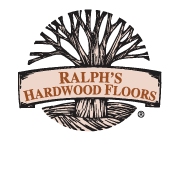 For centuries, you had to use solid plank hardwood flooring if you wanted hardwood floors in your home.
For centuries, you had to use solid plank hardwood flooring if you wanted hardwood floors in your home.
Today, you have another option—engineered hardwood flooring, which consists of a top layer of hardwood veneer, adhered to a backing of composite material. Engineered flooring began appearing last century, and recent advances in its quality have made it a viable alternative to solid plank flooring.
A fundamental appeal of the best engineered flooring today is that the backing material is constructed with layers of wood running in opposing directions, creating a “pull” that reduces the growing and shrinking that can occur in variable moisture conditions.
 Are engineered floors right for you? And if they are, how do you select quality engineered flooring and avoid the many inferior products on the market?
Are engineered floors right for you? And if they are, how do you select quality engineered flooring and avoid the many inferior products on the market?
Why Choose Engineered Flooring?
Some people simply prefer the stability of engineered hardwood,
For other homeowners, engineered hardwood is the only realistic option. These are scenarios in which engineered flooring is clearly the best choice.
- When the flooring is being installed over a concrete slab, below ground, or in other high-moisture areas. Quality engineered hardwood is more stable than solid plank—and although it is made of wood and will react to excessive moisture conditions—it can better handle higher moisture levels, such as those that occur over a concrete subfloor.
- When the flooring is being installed over a radiant heating system. Again, the stability of the best engineered hardwood makes it the ideal choice because these heating systems result in wide humidity variations.
- When your floors are being installed over existing floors. Because engineered flooring is usually thinner than solid plank flooring, it can sometimes be installed over existing floors, eliminating the cost of removing the old floor.
What’s the Highest Quality of Engineered Flooring?
We can get almost any engineered product, and we’re glad to talk with anyone about the right products for them.
The key consideration, beyond the manufacturer, is how the engineered flooring is constructed. There are three basic methods:
Rotary-peeled veneer
In this method, a log is placed on a large lathe and then spun around as a blade cuts off a thin slice of veneer. The veneer strips can vary in thickness but generally they are cut very thin (less than 3 mm) because this process is all about efficiency.
Not only is veneer this thin susceptible to cracking and splitting, it doesn’t have the traditional appearance of solid plank flooring. Because the blade peels off the veneer in a circular motion, the resulting grain is often described as “busy,” with unnatural-looking striped patterns and zig-zags.
In many cases, the thin veneer won’t be able to be re-sanded (to repair wear and damage or change color) more than once—if at all. We rarely recommend this option for our customers.
Sliced veneer
The technique involves cutting logs into thin squares that are then soaked in water to soften the wood fibers. Then the square is drawn across an angled blade, which slices off the veneer.
This method isn’t able to produce veneer of greater than 3 mm, but sliced veneer can look like traditional solid plank flooring, and it is a popular choice.
Sawn-cut veneer
Sawn-cut veneer is cut in the same way that solid plank flooring is cut. This means you can get any look you can get with solid plank. It also means that the veneer can be cut much thicker, allowing it be re-sanded numerous times. This is the most expensive of the options.
To find the right type of engineered flooring for your home, and to assess the quality of any engineered flooring you are considering, we recommend talking to a hardwood professional—like you’ll find at Ralph’s! In our showroom, we offer a wide selection of quality enginneered products to inspire you.















